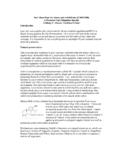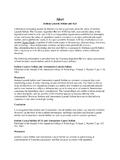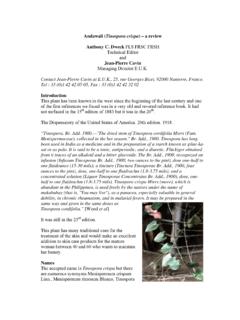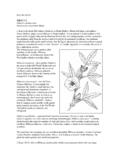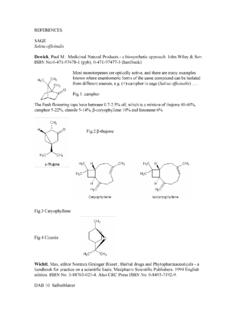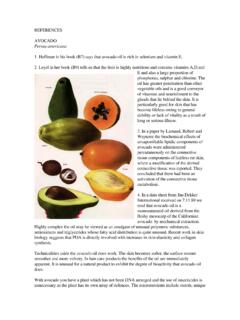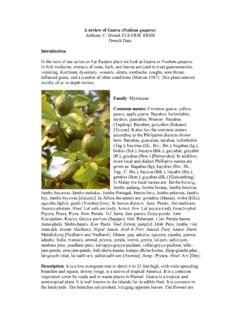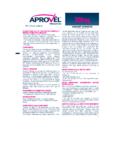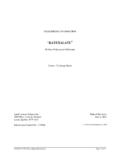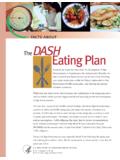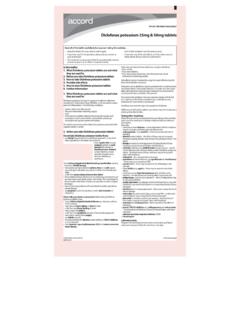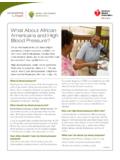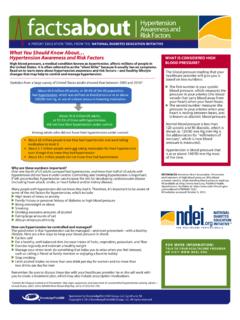Transcription of A review of Asam Gelugor (Garcinia atroviridis) Griff
1 A review of Asam Gelugor ( garcinia atroviridis ) Griff . ex T. Aders Anthony C. Dweck FLS FRSC FRSH. Dweck Data Introduction In the third of the series, we introduce a review Asam Gelugor or garcinia atroviridis , which is a plant used frequently in Thai medicine as an acidic fruit for reducing weight and excess fat by stopping the glycogen process (thereby converting fat to energy). Description: The asam gelugur tree (a lofty tree indigenous to Thailand.) grows to a height of 20 m and has long trunk, smooth grey bark and drooping branches. The lare dark green, shiny, long narrow with a pointed tand upturned edThe flowers are dark red and the round yellow to orangfruits are borne singly on twig ends and are 7-10 cm in diameter.
2 They are heavy, longitudinally grooved by 12 to 16 and are flattened at the apex. eaves ip ges. e Chemical composition: The fruit contains fruiting acids such as citric acid, tartaric acid, malic acid and ascorbic acid that have an antioxidant activity. Hydroxycitric acid ( ) is found in the fruits [Achmadi] and in the rind of certain garcinia fruits [Jena et al]. (-)-Hydroxycitric acid, or (-)-HCA, is the principal acid of fruit rinds of G. cambogia, G. indica and G. atroviridis . (-)-Hydroxycitric acid COOHCCHCCOOHHHHOHOCOOH 2-(butoxycarbonylmethyl)-3-butoxycarbony l-2-hydroxy-3-propanolide and 1 ,1 -dibutyl methyl hydroxycitrate, were isolated from the fruits [Mackeena et al] Two prenylated compounds, the benzoquinone atrovirinone and the depsidone atrovirisidone, were isolated from the roots [Permana et al ; 2000].
3 A compound referred to as atroviridin is reported in the stem bark [Duke]. This compound is described and synthetically proposed in another paper [Tisdale]. Atroviridin ( ) is a tetracyclic polyhydroxylated xanthone recently isolated from the stem bark of garcinia atroviridis . From a structural standpoint, atroviridin belongs to a growing family of xanthone and xanthonoid natural products isolated from garcinia -related tropical plants. nown Permana he Atroviridin A continuing study on the phytochemical constituents of garcinia atroviridis Griff ex T. Anders (Guttiferae) led to the isolation of a new prenylated hydroquinone from the roots of the plant.
4 The compound has been identified as 4-methylhydroatrovirinone. The roots also yielded the kmorelloflavone and its 7-O- -D-glucopyranoside, fukugiside, together with 14-cis-docosenoic acid. [et al; 2003]. OOOHOOHHO Other reported materials include succinic acid, cambogin, garcinol, camboginal and isogarcinol. Cosmetic uses: the fruits are reported to have antioxidant activity. Crude extracts (methanol) of various parts, viz. tleaves, fruits, roots, shoot and trunk bark, of garcinia atroviridis (endemic to Peninsular Malaysia) were screened for antimicrobial, and antioxidant (amongst other functions) activities.
5 The crude extracts exhibited predominantly antibacterial activity, with the root extract showing the strongest inhibition against the test bacteria. There was significant antifungal activity against Cladosporium herbarum exhibited by the fruit and the leaf extracts. The root, leaf, trunk and stem bark extracts (except for the fruits) showed strong antioxidant activity exceeding that of the standard antioxidant, alpha-tocopherol. [Mackeen et al; 2000] The extract of this fruit has free-radical scavenging activity. In another paper [Mackeen et al; 2002] we learn that the acid esters present in the fruits give the plant some antifungal activity.
6 Two compounds with a unique -lactone structure were isolated, of which one was most likely an artefact of garcinia acid (= hydroxycitric acid). Two new prenylated compounds, were isolated from the roots of garcinia atroviridis , both compounds were mildly inhibitory toward Bacillus cereus and Staphylococcus aureus. [Permana et al ; 2000] Food uses: The ripe fruits which are a bright orange-yellow are sliced, dried and used in curries or stewed in plenty of sugar and eaten. This acid fruit is sliced and dried, and sometimes used to give acidity to cooked dishes in place of tamarind. The dried slices are sometimes labelled 'tamarind slices' although they are in no way related.
7 Medicinal uses: Although the precise biological mode of action of this natural product has not yet been reported, it is noted that a decoction of the leaves of the parent tree has been traditionally used for the treatment of earache [Tisdale]. The plant has also been attributed with anti-inflammatory properties and has been found useful in cases of acne. Reducing body weight: The plant contains hydroxycitric acid that can be converted into potassium hydroxycitrate. The experiment was conducted to investigate the effect of potassium hydoxycitrate derived from gelugugr fruit juice on the body weight reduction and its cholesterol lowering capacity in rats.
8 The results showed that 2 ml of 2% daily treatment with hydroxycitrate for two weeks reduced serum cholesterol LDL levels from 63 mg/dl to 50 mg/dl, increased HDL level from 35 to 63 mg/dl and reduced body weight. It was concluded that potassium hydroxycitrate derived from the gelugur fruit might be useful as food supplement for lowering serum cholesterol level and body weight reduction [Achmadi]. (-)-HCA was shown to be a potent inhibitor of ATP citrate lyase (EC ), which catalyses the extramitochondrial cleavage of citrate to oxaloacetate and acetyl-CoA: citrate + ATP + CoA -> acetyl-CoA + ADP + Pi + oxaloacetate.
9 The inhibition of this reaction limits the availability of acetyl-CoA units required for fatty acid synthesis and lipogenesis during a lipogenic diet, that is, a diet high in carbohydrates. Extensive animal studies indicated that (-)-HCA suppresses the fatty acid synthesis, lipogenesis, food intake, and induced weight loss. In vitro studies revealed the inhibitions of fatty acid synthesis and lipogenesis from various precursors. This is a useful review [Jena]. Thermogenesis: how your body burns fat! In order to speed up the rate at which you burn fat, you must stimulate the process that controls it, thermogenesis.
10 Thermogenesis is simply when the body produces heat so that fat is burned for energy. A substance that stimulates thermogenesis is called a thermogenic activator References Achmadi, Institut Pertanian Bogor (Indonesia). Fakultas Matematika dan Ilmu Pengetahuan Alam. The potency of potassium hydroxycitrate derived from gelugur fruit ( garcinia atroviridis ) in reducing body weight and cholesterol levels in rats. Hayati (Indonesia). (2001), v. 8(1) p. 23-26 Duke, James: Dr. Duke's Phytochemical and Ethnobotanical Databases Chemicals and their Biological Activities in: garcinia atroviridis (Clusiaceae) Asam Gekugor.
